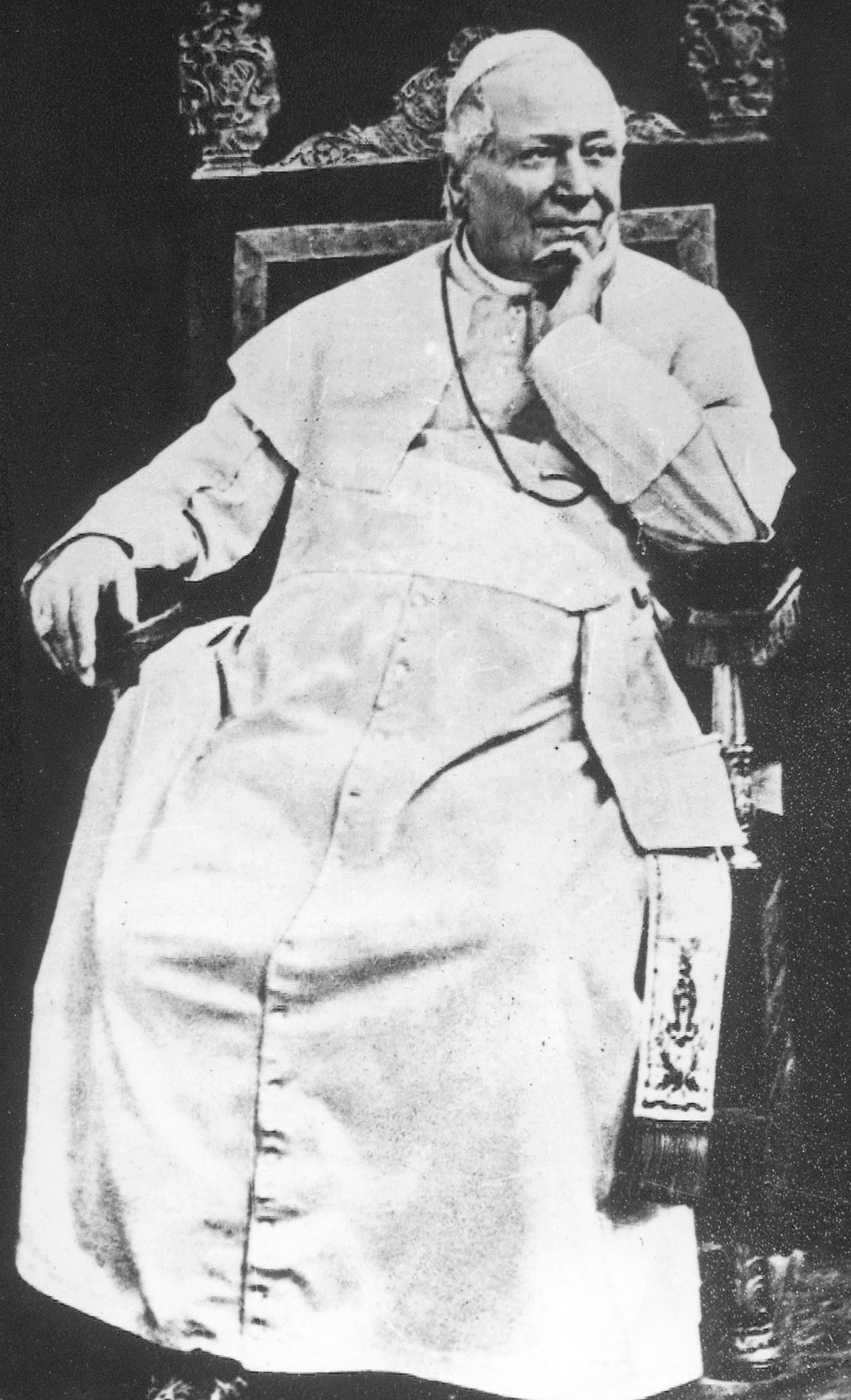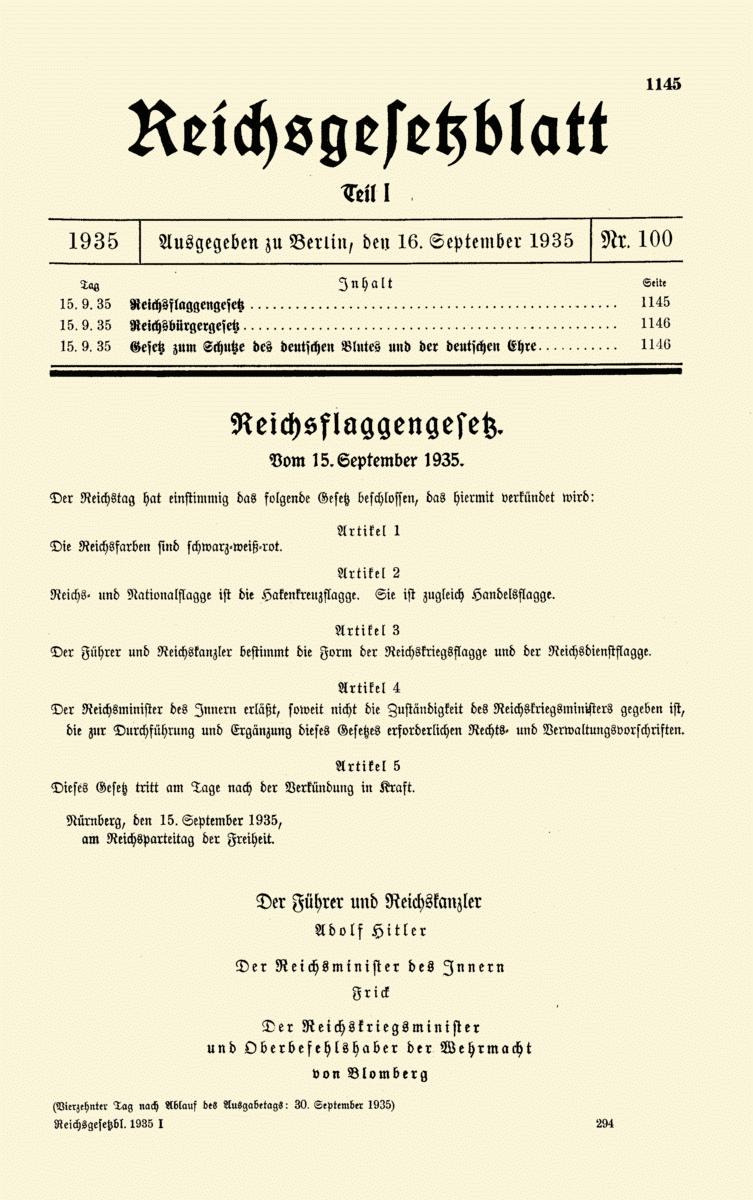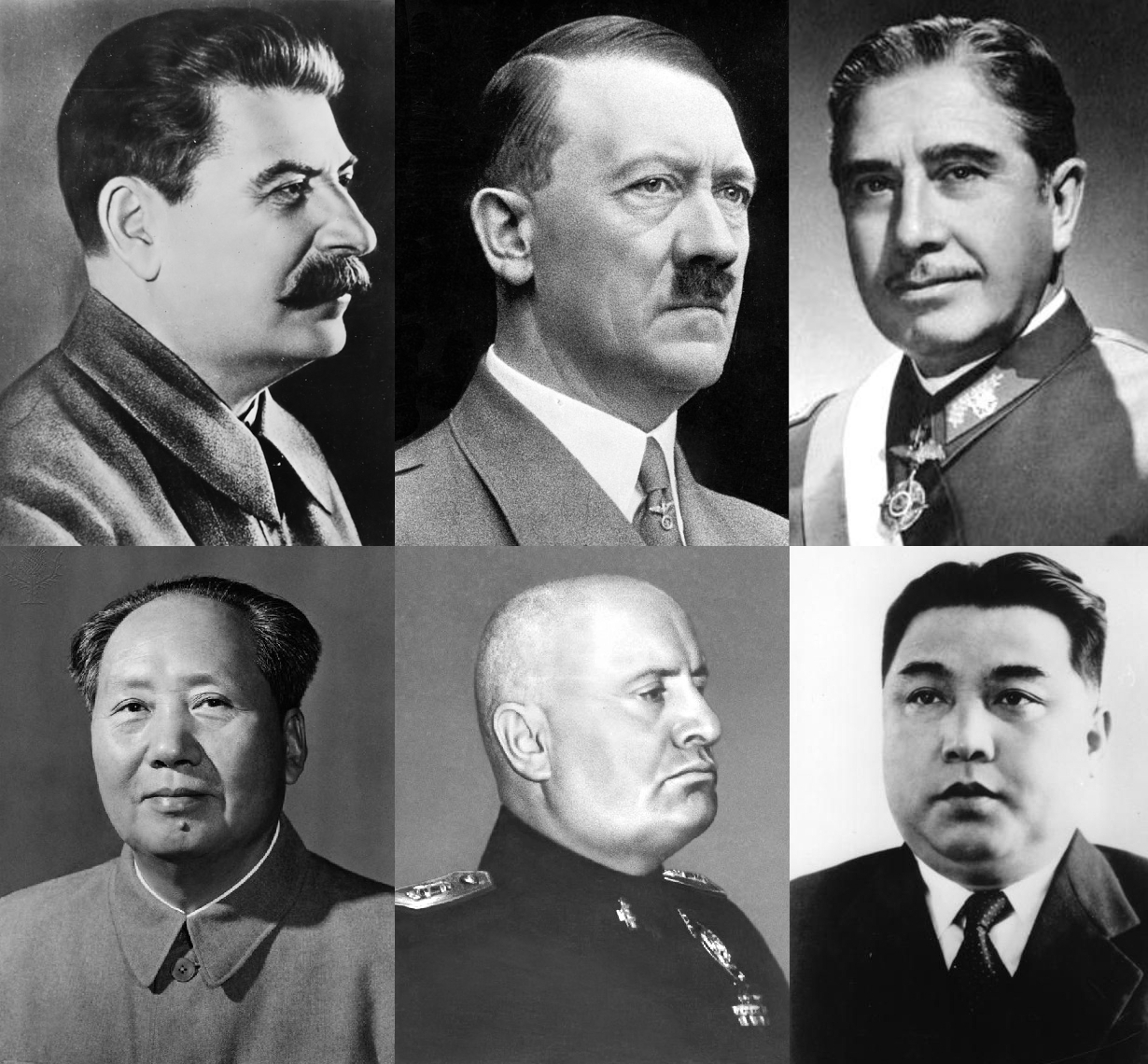|
Reich Concordat
The ''Reichskonkordat'' ("Concordat between the Holy See and the German Reich") is a treaty negotiated between the Vatican and the emergent Nazi Germany. It was signed on 20 July 1933 by Cardinal Secretary of State Eugenio Pacelli, who later became Pope Pius XII, on behalf of Pope Pius XI and Vice Chancellor Franz von Papen on behalf of President Paul von Hindenburg and the German government. It was ratified 10 September 1933 and it has been in force from that date onward. The treaty guarantees the rights of the Catholic Church in Germany. When bishops take office Article 16 states they are required to take an oath of loyalty to the Governor or President of the German Reich established according to the constitution. The treaty also requires all clergy to abstain from working in and for political parties. Nazi breaches of the agreement began almost as soon as it had been signed and intensified afterwards leading to protest from the Church including in the 1937 ''Mit brennender S ... [...More Info...] [...Related Items...] OR: [Wikipedia] [Google] [Baidu] |
Concordat
A concordat is a convention between the Holy See and a sovereign state that defines the relationship between the Catholic Church and the state in matters that concern both,René Metz, ''What is Canon Law?'' (New York: Hawthorn Books, 1960 st Edition, pg. 137 i.e. the recognition and privileges of the Catholic Church in a particular country and with secular matters that impact on church interests. According to P. W. Brown the use of the term "concordat" does not appear "until the pontificate of Pope Martin V (1413–1431) in a work by Nicholas de Cusa, entitled ''De Concordantia Catholica''". The first concordat dates from 1098, and from then to the beginning of the First World War the Holy See signed 74 concordats. Due to the substantial remapping of Europe that took place after the war, new concordats with legal successor states were necessary. The post-World War I era saw the greatest proliferation of concordats in history. Although for a time after the Second Vatican Counci ... [...More Info...] [...Related Items...] OR: [Wikipedia] [Google] [Baidu] |
Catholic Church In Germany
, native_name_lang = de , image = Hohe_Domkirche_St._Petrus.jpg , imagewidth = 200px , alt = , caption = Cologne Cathedral, Cologne , abbreviation = , type = National polity , main_classification = Catholic , orientation = Christianity , scripture = Bible , theology = Catholic theology , polity = Episcopal , governance = German Bishops' Conference , structure = , leader_title = Pope , leader_name = Francis , leader_title1 = Chairman , leader_name1 = Georg Bätzing , leader_title2 = Primas Germaniae , leader_name2 = Franz Lackner , leader_title3 = Apostolic Nuncio , leader_name3 = Nikola Eterović , fellowships_type = , fellowships = , fellowships_type1 = , fellowships1 = , division_type = , division = , division_type1 ... [...More Info...] [...Related Items...] OR: [Wikipedia] [Google] [Baidu] |
Kulturkampf
(, 'culture struggle') was the conflict that took place from 1872 to 1878 between the Catholic Church in Germany, Catholic Church led by Pope Pius IX and the government of Kingdom of Prussia, Prussia led by Otto von Bismarck. The main issues were clerical control of education and Ecclesiology, ecclesiastical appointments. A unique feature of , compared to other struggles between the state and the Catholic Church in other countries, was Prussia's anti-Polonism, anti-Polish component. By extension the term is sometimes used to describe any conflict between secular and religious authorities or deeply opposing values, beliefs between sizable factions within a nation, community, or other group. Background Europe and the Catholic Church Under the influence of new emerging philosophies and ideologies, such as the Age of Enlightenment, enlightenment, Scientific realism, realism, positivism, materialism, nationalism, secularism, and liberalism, the role of religion in society and th ... [...More Info...] [...Related Items...] OR: [Wikipedia] [Google] [Baidu] |
Otto Von Bismarck
Otto, Prince of Bismarck, Count of Bismarck-Schönhausen, Duke of Lauenburg (, ; 1 April 1815 – 30 July 1898), born Otto Eduard Leopold von Bismarck, was a conservative German statesman and diplomat. From his origins in the upper class of Junker landowners, Bismarck rose rapidly in Prussian politics, and from 1862 to 1890 he was the minister president and foreign minister of Prussia. Before his rise to the executive, he was the Prussian ambassador to Russia and France and served in both houses of the Prussian Parliament. He masterminded the unification of Germany in 1871 and served as the first Chancellor of the German Empire until 1890, in which capacity he dominated European affairs. He had served as the chancellor of the North German Confederation from 1867 to 1871, alongside his responsibilities in the Kingdom of Prussia. He cooperated with King Wilhelm I of Prussia to unify the various German states, a partnership that would last for the rest of Wilhelm's life. The ... [...More Info...] [...Related Items...] OR: [Wikipedia] [Google] [Baidu] |
Otto Fürst Von Bismarck
Otto, Prince of Bismarck, Count of Bismarck-Schönhausen, Duke of Lauenburg (, ; 1 April 1815 – 30 July 1898), born Otto Eduard Leopold von Bismarck, was a conservative German statesman and diplomat. From his origins in the upper class of Junker landowners, Bismarck rose rapidly in Prussian politics, and from 1862 to 1890 he was the Minister President of Prussia, minister president and List of foreign ministers of Prussia, foreign minister of Prussia. Before his rise to the Executive (government), executive, he was the Prussian ambassador to Russian Empire, Russia and Second French Empire, France and served in both houses of the Landtag of Prussia, Prussian Parliament. He masterminded the unification of Germany in 1871 and served as the first Chancellor of Germany#Under the Emperor (1871–1918), Chancellor of the German Empire until 1890, in which capacity he dominated European affairs. He had served as the chancellor of the North German Confederation from 1867 to 1871, alon ... [...More Info...] [...Related Items...] OR: [Wikipedia] [Google] [Baidu] |
Concordat
A concordat is a convention between the Holy See and a sovereign state that defines the relationship between the Catholic Church and the state in matters that concern both,René Metz, ''What is Canon Law?'' (New York: Hawthorn Books, 1960 st Edition, pg. 137 i.e. the recognition and privileges of the Catholic Church in a particular country and with secular matters that impact on church interests. According to P. W. Brown the use of the term "concordat" does not appear "until the pontificate of Pope Martin V (1413–1431) in a work by Nicholas de Cusa, entitled ''De Concordantia Catholica''". The first concordat dates from 1098, and from then to the beginning of the First World War the Holy See signed 74 concordats. Due to the substantial remapping of Europe that took place after the war, new concordats with legal successor states were necessary. The post-World War I era saw the greatest proliferation of concordats in history. Although for a time after the Second Vatican Counci ... [...More Info...] [...Related Items...] OR: [Wikipedia] [Google] [Baidu] |
World War II
World War II or the Second World War, often abbreviated as WWII or WW2, was a world war that lasted from 1939 to 1945. It involved the vast majority of the world's countries—including all of the great powers—forming two opposing military alliances: the Allies and the Axis powers. World War II was a total war that directly involved more than 100 million personnel from more than 30 countries. The major participants in the war threw their entire economic, industrial, and scientific capabilities behind the war effort, blurring the distinction between civilian and military resources. Aircraft played a major role in the conflict, enabling the strategic bombing of population centres and deploying the only two nuclear weapons ever used in war. World War II was by far the deadliest conflict in human history; it resulted in 70 to 85 million fatalities, mostly among civilians. Tens of millions died due to genocides (including the Holocaust), starvation, massa ... [...More Info...] [...Related Items...] OR: [Wikipedia] [Google] [Baidu] |
Allies Of World War II
The Allies, formally referred to as the United Nations from 1942, were an international military coalition formed during the Second World War (1939–1945) to oppose the Axis powers, led by Nazi Germany, Imperial Japan, and Fascist Italy. Its principal members by 1941 were the United Kingdom, United States, Soviet Union, and China. Membership in the Allies varied during the course of the war. When the conflict broke out on 1 September 1939, the Allied coalition consisted of the United Kingdom, France, and Poland, as well as their respective dependencies, such as British India. They were soon joined by the independent dominions of the British Commonwealth: Canada, Australia, New Zealand and South Africa. Consequently, the initial alliance resembled that of the First World War. As Axis forces began invading northern Europe and the Balkans, the Allies added the Netherlands, Belgium, Norway, Greece, and Yugoslavia. The Soviet Union, which initially had a nonaggression pa ... [...More Info...] [...Related Items...] OR: [Wikipedia] [Google] [Baidu] |
Nuremberg Laws
The Nuremberg Laws (german: link=no, Nürnberger Gesetze, ) were antisemitic and racist laws that were enacted in Nazi Germany on 15 September 1935, at a special meeting of the Reichstag convened during the annual Nuremberg Rally of the Nazi Party. The two laws were the Law for the Protection of German Blood and German Honour, which forbade marriages and extramarital intercourse between Jews and Germans and the employment of German females under 45 in Jewish households; and the Reich Citizenship Law, which declared that only those of German or related blood were eligible to be Reich citizens. The remainder were classed as state subjects without any citizenship rights. A supplementary decree outlining the definition of who was Jewish was passed on 14 November, and the Reich Citizenship Law officially came into force on that date. The laws were expanded on 26 November 1935 to include Romani and Black people. This supplementary decree defined Romanis as "enemies of the ... [...More Info...] [...Related Items...] OR: [Wikipedia] [Google] [Baidu] |
Enabling Act Of 1933
The Enabling Act (German: ') of 1933, officially titled ' (), was a law that gave the German Cabinet – most importantly, the Chancellor – the powers to make and enforce laws without the involvement of the Reichstag or Weimar President Paul von Hindenburg, leading to the rise of Nazi Germany. Critically, the Enabling Act allowed the Chancellor to bypass the system of checks and balances in the government. The act rested upon Article 48 of the Weimar Constitution which gave the government emergency powers during periods of unrest. Among these powers was the ability to create and enforce laws that could explicitly violate individual rights prescribed in the constitution. In January 1933, Adolf Hitler, leader of the Nazi Party, was appointed as chancellor, the head of the German government. On February 27, the German parliament building — the Reichstag — caught fire. Acting as chancellor, Hitler immediately accused the communists of being the perpetrators of ... [...More Info...] [...Related Items...] OR: [Wikipedia] [Google] [Baidu] |
Dictator
A dictator is a political leader who possesses absolute power. A dictatorship is a state ruled by one dictator or by a small clique. The word originated as the title of a Roman dictator elected by the Roman Senate to rule the republic in times of emergency (see Roman dictator and '' justitium''). Like the term '' tyrant'', and to a lesser degree '' autocrat'', ''dictator'' came to be used almost exclusively as a non-titular term for oppressive rule. In modern usage the term ''dictator'' is generally used to describe a leader who holds or abuses an extraordinary amount of personal power. Dictatorships are often characterised by some of the following: suspension of elections and civil liberties; proclamation of a state of emergency; rule by decree; repression of political opponents; not abiding by the procedures of the rule of law, and the existence of a cult of personality centered on the leader. Dictatorships are often one-party or dominant-party states. A wide variet ... [...More Info...] [...Related Items...] OR: [Wikipedia] [Google] [Baidu] |
Adolf Hitler
Adolf Hitler (; 20 April 188930 April 1945) was an Austrian-born German politician who was dictator of Nazi Germany, Germany from 1933 until Death of Adolf Hitler, his death in 1945. Adolf Hitler's rise to power, He rose to power as the leader of the Nazi Party, becoming the Chancellor of Germany, chancellor in 1933 and then taking the title of in 1934. During his dictatorship, he initiated European theatre of World War II, World War II in Europe by invasion of Poland, invading Poland on 1 September 1939. He was closely involved in military operations throughout the war and was central to the perpetration of the Holocaust: the genocide of Holocaust victims, about six million Jews and millions of other victims. Hitler was born in Braunau am Inn in Austria-Hungary and was raised near Linz. He lived in Vienna later in the first decade of the 1900s and moved to Germany in 1913. He was decorated during his Military career of Adolf Hitler, service in the German Army in Worl ... [...More Info...] [...Related Items...] OR: [Wikipedia] [Google] [Baidu] |










